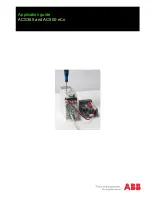
TM-D710A/E
3
2 APRS OPERATIONS written by Bob Bruninga, WB4APR
2.1 APRS Overview
2.1.1 History
APRS was developed beginning back in the 1980s by Bob Bruninga, WB4APR, as a real-time
local tactical communications system for rapidly exchanging digital data of immediate value to
local operations. This really took off when GPS became available and MAPS were integrated into
the system for tactical situational awareness of everything in the net. Unfortunately, in the 13
years since GPS became readily available to most operators and was added to APRS to facilitate
the display of the local network, too many follow-on applications have focused too heavily on the
vehicle tracking function at the expense of many of the more valuable functions of APRS for
human-to-human ham radio information exchange in real time.
As a result, too many operators appear to misunderstand some of the basic tenets of APRS.
APRS is not a vehicle tracking system. The Automatic Packet Reporting system is simply a local
data channel designed to share everything that is going on in ham radio in real time. This channel
was designed to support rapid, reliable exchange of information for local, tactical real-time
information, events or nets. The concept, which dates back to the mid 1980s, was to provide a
single information resource channel where everything happening could be beaconed and where
anyone could monitor to find out what was going on across all aspects of ham radio interests.
2.1.2 Local Information Exchange
A fundamental principal was that all relevant information is transmitted immediately to everyone in
the net and every station captures that information for consistent and standard display to all
participants. Information was refreshed redundantly but at a decaying rate so that new information
was rapidly disseminated but old information was updated less frequently than new info. Since the
primary objective is consistent exchange of information between everyone, APRS established
standard formats not only for the transmission of POSITION, STATUS, MESSAGES, and
QUERIES, it also establishes guidelines for display so that users of different systems would still
see the same consistent information displayed in a consistent manner (independent of the
particular display or mapping system in use).
To emphasize the freshness and importance of local information over the sometimes interference
of older and more distant data, the new TM-D710A/E implements both the decay algorithm and
also the new proportional pathing algorithms.
THE GOAL IS COMMUNICATIONS and LOCAL INFO UPDATE, -NOT- JUST VEHICLE TRACKING!














































